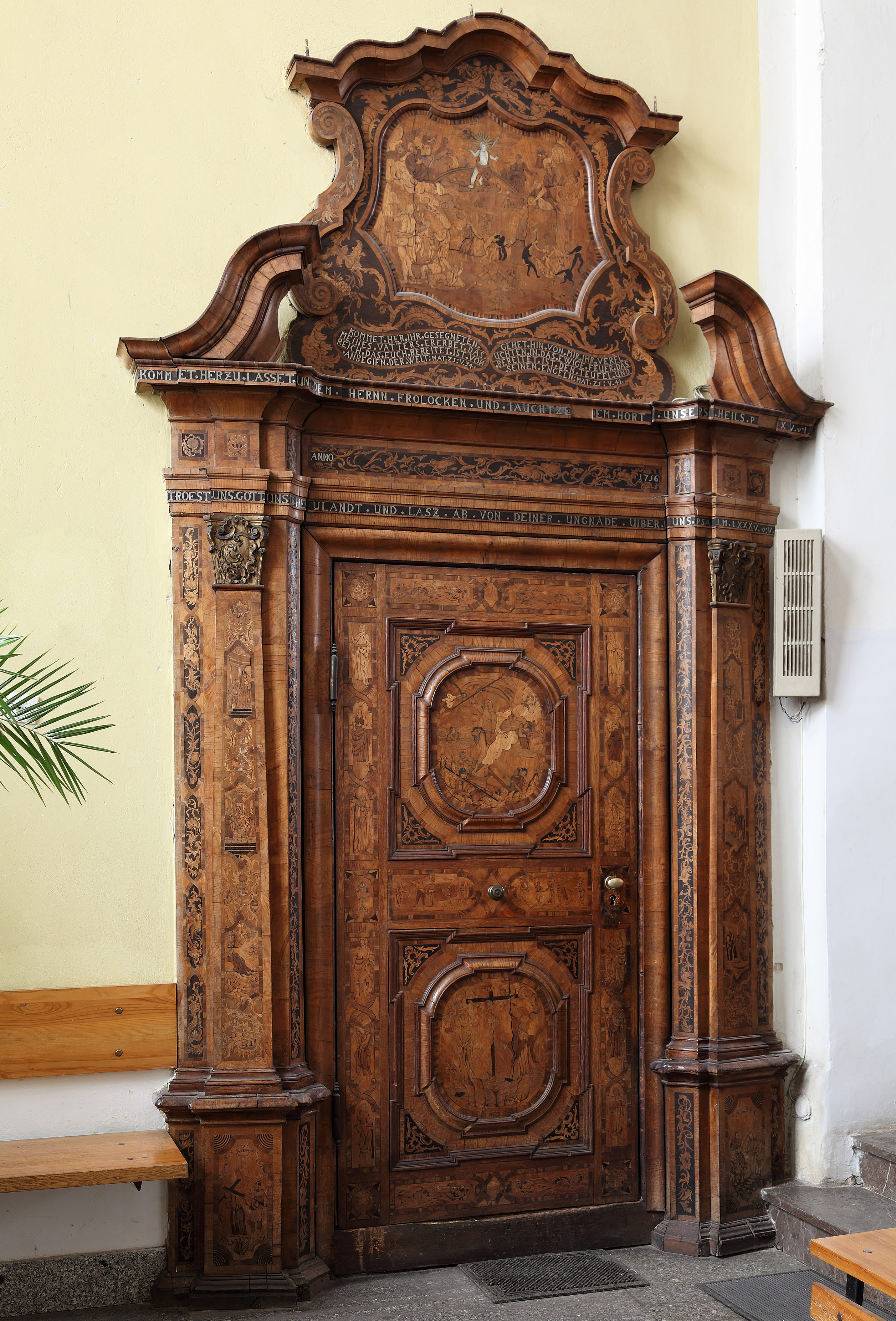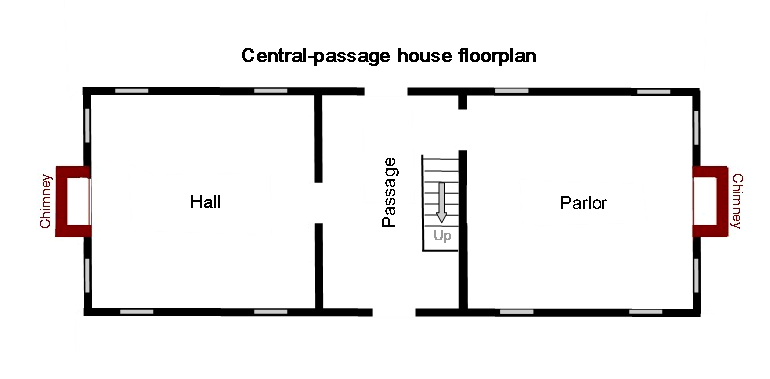|
Arlington (Natchez, Mississippi)
Arlington is a historic Federal style house and outbuildings in Natchez, Mississippi. The property, which includes three contributing buildings, was listed on the National Register of Historic Places in 1973. It was further declared a National Historic Landmark in 1974. Following a fire that destroyed much of the main house, it was placed on Mississippi's 10 most endangered historic places for 2009 by the Mississippi Heritage Trust. History Tradition maintains that Arlington was built by John Hampton White, a native of Elizabethtown, New Jersey, and his wife, Jane Surget White. The date that construction of the house began is murky. It is thought by scholars to have been built about 1819–20. The architect of Arlington is unknown. Its design has historically been attributed to John Hampton White, but no documentation exists to validate the claim. What is documented is that Lewis Evans, a wealthy Natchez planter, purchased the land on which Arlington stands in 1806. Here ... [...More Info...] [...Related Items...] OR: [Wikipedia] [Google] [Baidu] |
Natchez, Mississippi
Natchez ( ) is the county seat of and only city in Adams County, Mississippi, United States. Natchez has a total population of 14,520 (as of the 2020 census). Located on the Mississippi River across from Vidalia in Concordia Parish, Louisiana, Natchez was a prominent city in the antebellum years, a center of cotton planters and Mississippi River trade. Natchez is some southwest of Jackson, the capital of Mississippi, which is located near the center of the state. It is approximately north of Baton Rouge, Louisiana, located on the lower Mississippi River. Natchez is the 25th-largest city in the state. The city was named for the Natchez tribe of Native Americans, who with their ancestors, inhabited much of the area from the 8th century AD through the French colonial period. History Established by French colonists in 1716, Natchez is one of the oldest and most important European settlements in the lower Mississippi River Valley. After the French lost the French and India ... [...More Info...] [...Related Items...] OR: [Wikipedia] [Google] [Baidu] |
Keystone (architecture)
A keystone (or capstone) is the wedge-shaped stone at the apex of a masonry arch or typically round-shaped one at the apex of a vault. In both cases it is the final piece placed during construction and locks all the stones into position, allowing the arch or vault to bear weight. In arches and vaults (such as quasi-domes) keystones are often enlarged beyond the structural requirements and decorated. A variant in domes and crowning vaults is a lantern. Keystones, as a hallmark of strength or good architecture, or their suggested form are sometimes placed in the centre of the flat top of doors, recesses and windows for decorative effect, so as to form an upward projection of a lintel. Although a masonry arch or vault cannot be self-supporting until the keystone is placed, the keystone experiences the least stress of any of the voussoirs, due to its position at the apex. Old keystones can decay due to vibration, a condition known as bald arch. Architecture In a rib-vaulted c ... [...More Info...] [...Related Items...] OR: [Wikipedia] [Google] [Baidu] |
Houses On The National Register Of Historic Places In Mississippi
A house is a single-unit residential building. It may range in complexity from a rudimentary hut to a complex structure of wood, masonry, concrete or other material, outfitted with plumbing, electrical, and heating, ventilation, and air conditioning systems.Schoenauer, Norbert (2000). ''6,000 Years of Housing'' (rev. ed.) (New York: W.W. Norton & Company). Houses use a range of different roofing systems to keep precipitation such as rain from getting into the dwelling space. Houses may have doors or locks to secure the dwelling space and protect its inhabitants and contents from burglars or other trespassers. Most conventional modern houses in Western cultures will contain one or more bedrooms and bathrooms, a kitchen or cooking area, and a living room. A house may have a separate dining room, or the eating area may be integrated into another room. Some large houses in North America have a recreation room. In traditional agriculture-oriented societies, domestic animals such as ... [...More Info...] [...Related Items...] OR: [Wikipedia] [Google] [Baidu] |
National Historic Landmarks In Mississippi
This is a List of National Historic Landmarks in Mississippi. It includes current National Historic Landmarks (NHLs), and also National Park Service areas in Mississippi that overlap. National Historic Landmarks in Mississippi There are 40 National Historic Landmarks in Mississippi. Five of these are also State Historic Sites. For consistency, the sites are named here as designated under the National Historic Landmark program. A cross-reference list of all seven State Historic Sites is provided further below, which uses different names for some sites. The NHLs are concentrated in 17 of Mississippi's 82 counties. Thirteen are in Adams County alone. Former NHLs in Mississippi There have been no de-designations of Mississippi NHLs, but one NHL object has been moved out of the state and was subsequently delisted: National Park Service areas in Mississippi National Historic Parks, National Battlefields, and certain other areas listed ... [...More Info...] [...Related Items...] OR: [Wikipedia] [Google] [Baidu] |
Demolition By Neglect
Demolition by neglect refers to the practice of allowing a building to deteriorate to the point that demolition becomes necessary or restoration becomes unreasonable. The practice has been used by property owners as a means of sidestepping historic preservation Historic preservation (US), built heritage preservation or built heritage conservation (UK), is an endeavor that seeks to preserve, conserve and protect buildings, objects, landscapes or other artifacts of historical significance. It is a philos ... laws by providing justification for the demolition of historical buildings. In order to prevent demolition by neglect, a number of cities have adopted ordinances requiring property owners to properly maintain historical buildings. References {{planning-stub Historic preservation ... [...More Info...] [...Related Items...] OR: [Wikipedia] [Google] [Baidu] |
Cast Iron
Cast iron is a class of iron–carbon alloys with a carbon content more than 2%. Its usefulness derives from its relatively low melting temperature. The alloy constituents affect its color when fractured: white cast iron has carbide impurities which allow cracks to pass straight through, grey cast iron has graphite flakes which deflect a passing crack and initiate countless new cracks as the material breaks, and ductile cast iron has spherical graphite "nodules" which stop the crack from further progressing. Carbon (C), ranging from 1.8 to 4 wt%, and silicon (Si), 1–3 wt%, are the main alloying elements of cast iron. Iron alloys with lower carbon content are known as steel. Cast iron tends to be brittle, except for malleable cast irons. With its relatively low melting point, good fluidity, castability, excellent machinability, resistance to deformation and wear resistance, cast irons have become an engineering material with a wide range of applications and are ... [...More Info...] [...Related Items...] OR: [Wikipedia] [Google] [Baidu] |
Greek Revival Architecture
The Greek Revival was an architectural movement which began in the middle of the 18th century but which particularly flourished in the late 18th and early 19th centuries, predominantly in northern Europe and the United States and Canada, but also in Greece itself following independence in 1832. It revived many aspects of the forms and styles of ancient Greek architecture, in particular the Greek temple, with varying degrees of thoroughness and consistency. A product of Hellenism, it may be looked upon as the last phase in the development of Neoclassical architecture, which had for long mainly drawn from Roman architecture. The term was first used by Charles Robert Cockerell in a lecture he gave as Professor of Architecture to the Royal Academy of Arts, London in 1842. With a newfound access to Greece and Turkey, or initially to the books produced by the few who had visited the sites, archaeologist-architects of the period studied the Doric and Ionic orders. Despite its univ ... [...More Info...] [...Related Items...] OR: [Wikipedia] [Google] [Baidu] |
Buxus
''Buxus'' is a genus of about seventy species in the family Buxaceae. Common names include box or boxwood. The boxes are native to western and southern Europe, southwest, southern and eastern Asia, Africa, Madagascar, northernmost South America, Central America, Mexico and the Caribbean, with the majority of species being tropical or subtropical; only the European and some Asian species are frost-tolerant. Centres of diversity occur in Cuba (about 30 species), China (17 species) and Madagascar (9 species). They are slow-growing evergreen shrubs and small trees, growing to 2–12 m (rarely 15 m) tall. The leaves are opposite, rounded to lanceolate, and leathery; they are small in most species, typically 1.5–5 cm long and 0.3–2.5 cm broad, but up to 11 cm long and 5 cm broad in ''B. macrocarpa''. The flowers are small and yellow-green, monoecious with both sexes present on a plant. The fruit is a small capsule 0.5–1.5 cm long (to 3 cm i ... [...More Info...] [...Related Items...] OR: [Wikipedia] [Google] [Baidu] |
Overdoor
An "overdoor" (or "Supraporte" as in German, or "sopraporte" as in Italian) is a painting, bas-relief or decorative panel, generally in a horizontal format, that is set, typically within ornamental mouldings, over a door, or was originally intended for this purpose. The overdoor is usually architectural in form, but may take the form of a cartouche in Rococo settings, or it may be little more than a moulded shelf for the placement of ceramic vases, busts or curiosities. An overmantel serves a similar function above a fireplace mantel. From the end of the 16th century, at first in interiors such as the Palazzo Sampieri, Bologna, where Annibale Carracci provided overdoor paintings, they developed into a minor genre of their own, in which the ''trompe-l'œil'' representations of stone bas-reliefs, or vases of flowers, in which Jean-Baptiste Monnoyer specialized, were heightened by ''sotto in su'' perspective, in which the light was often painted to reproduce the light, diffused from ... [...More Info...] [...Related Items...] OR: [Wikipedia] [Google] [Baidu] |
Central-passage House
The central-passage house, also known variously as central hall plan house, center-hall house, hall-passage-parlor house, Williamsburg cottage, and Tidewater-type cottage, was a vernacular, or folk form, house type from the colonial period onward into the 19th century in the United States. It evolved primarily in colonial Maryland and Virginia from the hall and parlor house, beginning to appear in greater numbers by about 1700. It partially developed as greater economic security and developing social conventions transformed the reality of the American landscape, but it was also heavily influenced by its formal architectural relatives, the Palladian and Georgian styles with their emphasis on symmetry. Architectural features The central-passage house was built much like the earlier hall and parlor house, except that its hall and parlor were divided by a central passageway. In fact, in many of the earliest examples a hall-parlor arrangement had a second partition added inside th ... [...More Info...] [...Related Items...] OR: [Wikipedia] [Google] [Baidu] |
Lintel (architecture)
A lintel or lintol is a type of beam (a horizontal structural element) that spans openings such as portals, doors, windows and fireplaces. It can be a decorative architectural element, or a combined ornamented structural item. In the case of windows, the bottom span is instead referred to as a sill, but, unlike a lintel, does not serve to bear a load to ensure the integrity of the wall. Modern day lintels are made using prestressed concrete and are also referred to as beams in beam and block slabs or ribs in rib and block slabs. These prestressed concrete lintels and blocks are components that are packed together and propped to form a suspended floor concrete slab. Structural uses In worldwide architecture of different eras and many cultures, a lintel has been an element of post and lintel construction. Many different building materials have been used for lintels. In classical Western architecture and construction methods, by ''Merriam-Webster'' definition, a lintel is a l ... [...More Info...] [...Related Items...] OR: [Wikipedia] [Google] [Baidu] |
Window Sill
A windowsill (also written window sill or window-sill, and less frequently in British English, cill) is the horizontal structure or surface at the bottom of a window. Window sills serve to structurally support and hold the window in place. The exterior portion of a window sill provides a mechanism for shedding rainwater away from the wall at the window opening. Therefore, window sills are usually inclined slightly downward away from the window and wall, and often extend past the exterior face of the wall, so the water will drip off rather than run down the wall. Some windowsills are made of natural stone, cast stone, concrete, tile, or other non-porous materials to further increase their water resistance. Windows may not have a structural sill or the sill may not be sufficiently weather resistant. In these cases, a strip of waterproof and weather resistant material (steel, vinyl, PVC) called a sill pan may be used to protect the wall and shed the water. Like the sill, a sill p ... [...More Info...] [...Related Items...] OR: [Wikipedia] [Google] [Baidu] |
.jpg)

.png)








.png)